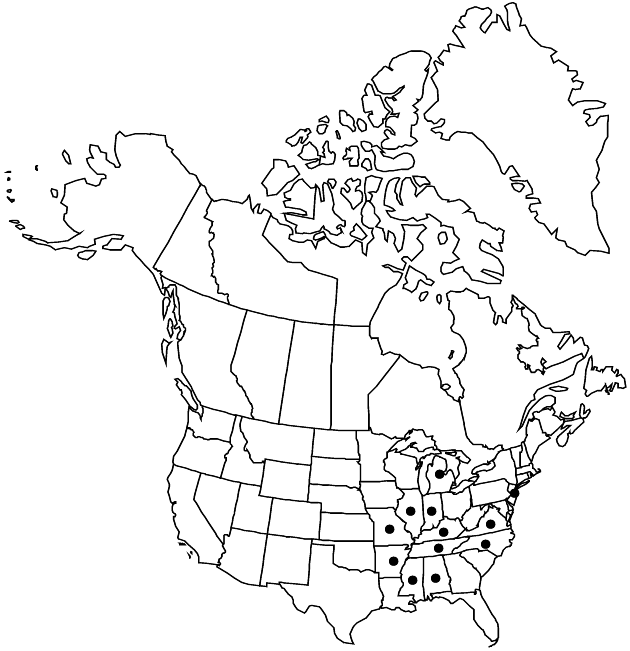Heterotheca camporum
Field & Lab. 19: 71. 1951.
Perennials, 35–110(–150) cm; taprooted, spreading by rhizomes. Stems 1–30(–100), ascending to erect (sometimes reddish brown, sometimes ± brittle), appressed-strigose, sparsely to moderately long-hirsute, eglandular or sparsely to moderately stipitate-glandular, more densely so distally; axillary fascicles absent. Leaves: proximal cauline subpetiolate to sessile, blades oblanceolate, 38–73 cm × 6–15(–18) mm, bases cuneate, margins flat, sparsely serrate, strigoso-ciliate, with a few long cilia proximally, faces moderately long-strigose, eglandular or sparsely to moderately stipitate-glandular; distal sessile (usually spreading, sometimes perpendicular), blades usually narrowly to broadly oblanceolate, rarely obovate or ovate, little reduced distally (not stiff), margins sparsely serrate (not long-ciliate), faces moderately strigose, sparsely to moderately stipitate-glandular. Heads (1–)5–24, usually in open to congested corymbiform arrays, sometimes borne singly, on long peduncular branches. Peduncles 5–35 mm, short-hispido-strigose, sometimes stipitate-glandular; bracts 1–3, proximal leaflike, becoming linear-lanceolate, less hairy and more stipitate-glandular distally, larger bracts subtending heads absent or very rare. Involucres cylindric to campanulo-hemispheric, 7–9(–10.5) mm. Phyllaries in 4–5 series, outer and mid narrowly triangular, unequal, margins hyaline, fimbriate-ciliate apically, faces sparsely strigose, eglandular or sparsely to moderately stipitate-glandular. Ray florets 16–29(–38); laminae 10.5–17(–21.5) × 1–2(–2.6) mm. Disc florets (23–)32–66; corolla barely ampliate, 5–6.6 mm, glabrous, lobes 0.5–1 mm, glabrous or glabrate. Cypselae monomorphic, compressed obconic, 1.7–3.9 mm, ribs 7–10 (often brownish), faces moderately strigose; pappi off-white, outer of linear scales 0.2–1 mm, inner of bristles 5–7 mm, longest weakly clavate.
Distribution

Ala., Ark., Ill., Ind., Ky., Mich., Miss., Mo., N.C., N.J., Tenn., Va.
Discussion
Varieties 2 (2 in the flora).
Chance introductions (usually emphemeral) of Heterotheca camporum have occurred in Michigan, New Jersey, and likely other eastern states. Heterotheca camporum has well-developed serrations along the margins of its distal cauline leaves, which no other species has, although basal leaves in some species may have one or two serrations distally.
Selected References
None.
Key
| 1 | Plants 35–70 cm; distal stems and peduncles eglandular or sparsely to moderately stipitate-glandular; distal leaves moderately to densely hispido-strigose, usually eglandular, rarely sparsely stipitate-glandular; prairies, sandy banks, limestone bluffs, ledges, along the Mississippi River | Heterotheca camporum var. camporum |
| 1 | Plants 35–140 cm; distal stems and peduncles moderately to densely stipitate-glandular; distal leaves moderately hispido-strigose, sparsely to moderately stipitate-glandular; roadsides, disturbed sandy habitats, stream banks, glades | Heterotheca camporum var. glandulissima |